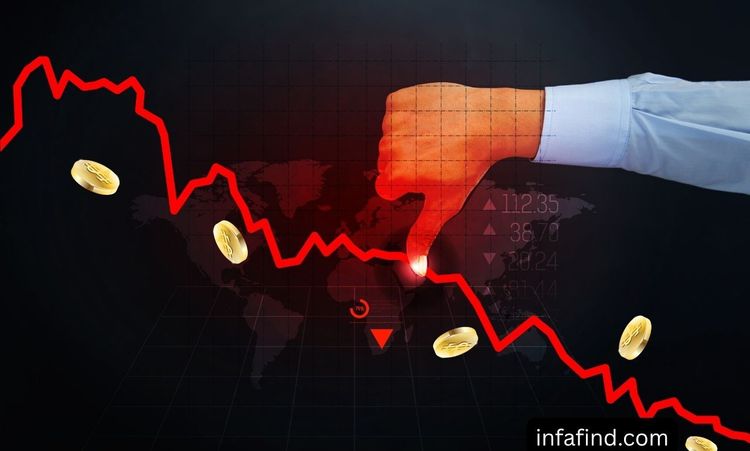Stocks hold a strange place in everyday life. People mention them during family dinners, office breaks, and long commutes. Yet many still feel unsure when the topic comes up. The market seems busy and loud, full of numbers that shift before anyone can blink. That noise creates confusion for beginners and even for people who follow financial news.
This guide breaks down 8 Facts About Stocks that reveal how markets behave and why certain trends appear again and again. The world of stocks stretches far beyond digital charts and fast trades. It carries centuries of stories, mistakes, breakthroughs, and big turning points. These facts can help readers understand what drives the market and why certain months feel heavier than others. Take your time with each section. You may find something surprising or oddly familiar.
The Stock Market Is More Than 400 Years Old
Here's something most people get wrong. Stock trading didn't start in New York or London. It began in Amsterdam way back in 1602. The Dutch East India Company needed money for its ships and trading missions. So they came up with an idea: sell pieces of the company to regular people.
Before that, merchants would trade goods and make deals informally. There was no central place to go, no rules everyone followed. Amsterdam changed all that. Traders met in one spot. They agreed on how things should work. Suddenly, buying and selling shares became legitimate business.
That was over 400 years ago. Think about everything that's happened since then. Countless wars. The industrial revolution. Two world wars. The internet age. Through all of it, stock markets kept going. They adapted and survived. The basic idea stayed the same though: people invest money, businesses use it, everyone shares the results.
There Are More Than 60 Stock Exchanges in the World
Stock trading isn't just an American thing. Right now, more than 60 major exchanges operate globally. New York has the biggest ones, sure. But Tokyo, London, Shanghai, and Hong Kong run massive markets too.
Every continent has exchanges serving local economies. Lagos and Johannesburg handle African trading. São Paulo and Mexico City cover Latin America. Mumbai's exchange has exploded in size over the past twenty years. These aren't small operations either. Billions of dollars change hands daily in these places.
Different exchanges have different rules. Some only list large, established companies. Others welcome smaller businesses looking for capital. Trading hours shift based on time zones. When American markets close, Asian ones open. This creates a continuous cycle. Somewhere in the world, stocks are always trading.
Annually, The Stock Market Is Likely to Increase by 70%
Let's talk numbers. Look at any long stretch of market history. You'll find something interesting. About seven out of every ten years show gains. That's 70% of the time with positive returns.
The other three years? Those can be rough. Sometimes really rough. But the wins outnumber the losses consistently. This isn't a guarantee, obviously. Markets don't care what happened before. But the pattern holds across decades.
A lot of people miss this because they watch daily prices. Stocks go up and down constantly. That's just noise. Zoom out to yearly returns and a clearer picture emerges. Most years, patient investors make money. The market rewards those who stick around. You can't time it perfectly. Nobody can. But staying invested beats jumping in and out.
October Is the Most Volatile Month
October has earned a nasty reputation on Wall Street. Several famous crashes happened during this month. The 1929 disaster that started the Great Depression? October. Black Monday in 1987? October again. The 2008 crisis hit its worst point in October too.
What's going on here? Nobody knows for certain. Some experts blame quarterly portfolio adjustments. Big institutional investors rebalance their holdings. Others think it's psychological. Summer ends, reality sets in, people get nervous. Old agricultural patterns might play a role. Harvest time meant economic uncertainty centuries ago.
Wild swings don't automatically mean losses though. Prices can jump up just as fast as they fall. October's reputation actually makes traders extra careful. They watch their positions more closely. Sometimes that prevents bigger problems. Experienced investors often see opportunity in October volatility. They buy good stocks when panic drives prices down.
September Is the Worst Month
While October gets dramatic, September just quietly stinks. The data backs this up. September shows negative average returns more than any other month. Traders call it the September Effect.
Why does this happen every year? Several reasons stack up. Summer vacations end and trading volume increases. Fund managers review their portfolios before the final quarter. Tax planning kicks in. Companies close their fiscal years. All this selling creates downward pressure.
Should you dump your stocks every August? Bad idea. Trying to time the market usually backfires. You'll miss gains and pay extra fees. Better approach: view September as shopping time. Prices often drop predictably. That's when you want to buy, not sell. Warren Buffett made his fortune buying when others panicked.
The Most Expensive Share Is Berkshire Hathaway
One share of Berkshire Hathaway Class A stock costs a fortune. We're talking hundreds of thousands of dollars. Sometimes over half a million bucks. For one single share.
That seems crazy until you understand why. Warren Buffett runs the company his own way. Most companies split their stock when prices climb too high. Apple has split multiple times. So has Tesla. This keeps shares affordable for regular folks. Buffett refuses to do this with Class A shares.
His reasoning? High prices keep out the speculators. Day traders won't touch a $500,000 stock. Only serious, long-term investors buy in. Class B shares exist for everyone else. They cost much less but represent the same company. Different voting rights, same ownership. Buffett's strategy attracts the investors he wants.
The Earliest Stock Exchange Book Dates From 1688
A guy named Joseph de la Vega wrote something remarkable in 1688. His book "Confusion of Confusions" explained how the Amsterdam exchange worked. He described trading strategies, crowd behavior, and common mistakes.
The amazing part? Most of his observations still apply today. De la Vega wrote about bulls and bears pushing prices around. He warned against following the crowd blindly. He explained how rumors could tank a stock overnight. Sound familiar? That's because people haven't changed much in 300 years.
Technology has advanced incredibly since then. We trade electronically now instead of shouting in crowded rooms. But fear and greed still drive decisions. Bubbles still form. Crashes still happen. Reading de la Vega's old book reveals something important: the fundamentals of smart investing don't change. Human nature is human nature.
The First Stock Market Bubble Dates From 1720
The South Sea Bubble taught markets a brutal lesson. This British company promised incredible wealth from South American trade. They claimed exclusive rights to ship goods there. Investors went absolutely nuts buying shares. Prices shot up based on pure hype.
Reality was different. The company's actual business prospects were terrible. Most of the promises were exaggerated or flat-out lies. When people figured this out, panic hit. Everyone tried selling at once. Share prices collapsed. Thousands lost everything. Even Isaac Newton got burned in this mess.
This pattern repeats constantly throughout history. Dutch tulip bulbs in the 1600s. Railroad stocks in the 1800s. Dot-com companies in 2000. Housing markets in 2008. Cryptocurrency recently. The names change but the story stays the same. Prices disconnect from reality. Euphoria takes over. Then gravity returns. Understanding this helps you avoid the next bubble.
Conclusion
Stock markets hold more history than most realize. Four centuries of innovation, crisis, and recovery shaped what we see today. September typically disappoints while October swings wildly. Markets climb roughly 70% of years. One Berkshire share costs more than most cars.
These facts matter because they reveal patterns. Markets aren't random. They reflect human behavior across time. Greed, fear, hope, and panic drive prices today just like in 1720. Technology changes but psychology doesn't. Knowing this history gives you an edge. You won't panic during the next crash. You'll recognize bubbles forming. You'll understand that volatility creates opportunity.
Nobody can predict exactly what happens next. Markets will surprise us again. But armed with historical knowledge, you make smarter choices. Stay patient. Think long-term. Learn from the past. That's how investors build real wealth over time.




